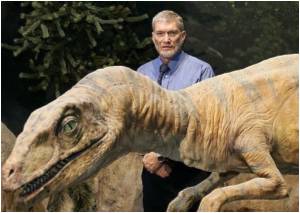New evidence linking extreme climate change, oxygen rise, and early animal evolution was provided by an analysis of organic-rich rocks from South China.

While the direct cause-and-effect relationships between animal and environmental evolution remain topics of intense debate, all this research has been hampered by the lack of direct evidence for an oxygen increase coincident with the appearance of the earliest animals - until now.
A new study led by scientists at the University of Nevada, Las Vegas, offers the first evidence of a direct link between trends in early animal diversity and shifts in Earth system processes.
The fossil record shows a marked increase in animal and algae fossils roughly 635 million years ago. An analysis of organic-rich rocks from South China points to a sudden spike in oceanic oxygen levels at this time - in the wake of severe glaciation.
The new evidence pre-dates previous estimates of a life-sustaining oxygenation event by more than 50 million years.
"This work provides the first real evidence for a long speculated change in oxygen levels in the aftermath of the most severe climatic event in Earth's history - one of the so-called 'Snowball Earth'glaciations," said Timothy Lyons, a professor of biogeochemistry at UC Riverside.
Advertisement
"We found levels of molybdenum and vanadium in the Doushantuo Formation mudstones that necessitate that the global ocean was well ventilated. This well-oxygenated ocean was the environmental backdrop for early animal diversification," said Noah Planavsky, a former UCR graduate student in Lyons's lab now at CalTech.
Advertisement
According to the researchers, the oxygen rise is likely due to increased organic carbon burial, a result of more nutrient availability following the extreme cold climate of the 'Snowball Earth'glaciation when ice shrouded much of Earth's surface.
Lyons and Planavsky argued in research published earlier in the journal Nature that a nutrient surplus associated with the extensive glaciations may have initiated intense carbon burial and oxygenation. Burial of organic carbon - from photosynthetic organisms - in ocean sediments would result in the release of vast amounts of oxygen into the ocean-atmosphere system.
"We are delighted that the new metal data from the South China shale seem to be confirming these hypothesized events," Lyons said.
The study appeared in the latest issue of the journal Nature.
Source-ANI










